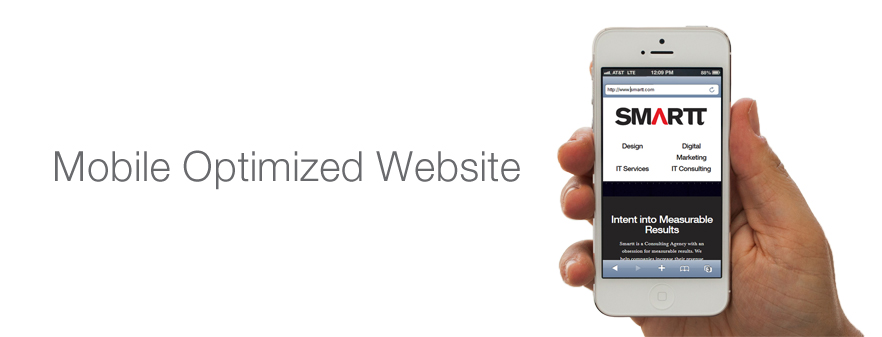5 Key Considerations for Mobile SEO

20% of all web searches now occur on a mobile device, and 73% of these searches drive valuable actions for businesses. Because mobile users are searching on a smaller screen and are generally on-the-go, it’s critical your site rank among the first few listings if you want it to be found by mobile searchers. In order to do so, you need to make sure your site is mobile-search optimized. While many elements of mobile SEO are consistent with regular SEO, the following five aspects deserve extra consideration when targeting mobile:
-
Build your site using responsive design techniques.
Google’s Head of Global Mobile Search says the search giant recommends responsive design, rather than building a separate mobile site. This is easier than trying to maintain consistent quality and content across both sites, and allows you to just build SEO value for one site rather than two.
When designing your website, keep the capabilities of mobile devices and the habits of mobile users in mind. Keep content above the fold in small screen layouts so that users don’t have to scroll, and minimize the number of clicks required to find information on your site. Also, keep in mind that 3G and 4G network speeds are much slower than DSL or satellite, so minimize load times to prevent on-the-go users having to wait forever for your site to load.
-
Optimize your copy for mobile-friendly keywords.
Mobile keywords are often shorter than desktop ones because mobile users are in a hurry and it is more difficult to type on a mobile device. These keywords may also be different, since the way someone searches for your products when they are at home researching them is different from how they might search if they are walking down the street, looking to buy now.
Since you can only optimize each page for 3-5 keywords, this may mean you have to choose between mobile and desktop search terms. In that case, consider that mobile searches are more likely to convert and convert to action faster than desktop ones, so it may be worth giving those keywords priority.
You can find mobile search terms using Google’s Keyword Tool.
-
Nurture your local search presence.
20% of all Google searches have local intent, but when you look at just mobile searches, that number doubles to 40%. Mobile users are much more likely to be searching for a business near them that they want to visit right now, so it’s especially important to make sure your site turns up in local results.
Set up profiles in Google Local and Bing Maps, because these results appear at the top of local searches in both search engines, and also claim your listings on Yelp and other local directories that many mobile searchers use to find local businesses. Try to have happy customers leave reviews on your profiles, since these create social proof for searchers and are a great source of keyword-rich backlinks.
You may even consider running mobile PPC ads using location targeting to increase the likelihood your site will appear in the top of the local listings.
-
Engage over social media.
Social media is huge on mobile devices, representing 15% of mobile US internet time and second only to checking email. Mobile users spend more time on social media than on search engines, so why not let your followers do some mobile marketing for you by building a social presence and providing social sharing links for your content? Social media backlinks also help boost your website’s SEO value, both for mobile and for regular desktop searches.
-
Use your mobile analytics.
Google Analytics provides separate mobile tracking, letting you monitor your mobile site performance by device type, keywords, and location to find out what percentage of your site traffic comes from mobile and how those visitors behave once they land on your site.
By tracking and analyzing your mobile traffic, you can find refine your mobile SEO strategy and improve the mobile user experience of your site, which in turn will help drive more mobile traffic.
As devices continue to improve and network speeds continue to increase, more and more visitors will access your site from their mobile device. Mobile searches are also more likely to convert to action, and will do so faster than desktop searches, so it’s important you consider the unique requirements of mobile in your SEO strategy. By doing so, you ensure that your site turns up in the top of mobile search results and your target audience can access your site from wherever they are.
Have questions about mobile web design and SEO? Contact us or leave a comment below.
If you have to learn the latest SEO or digital marketing best practices, attend the P.A.C.E Digital Marketing Training Workshop.


